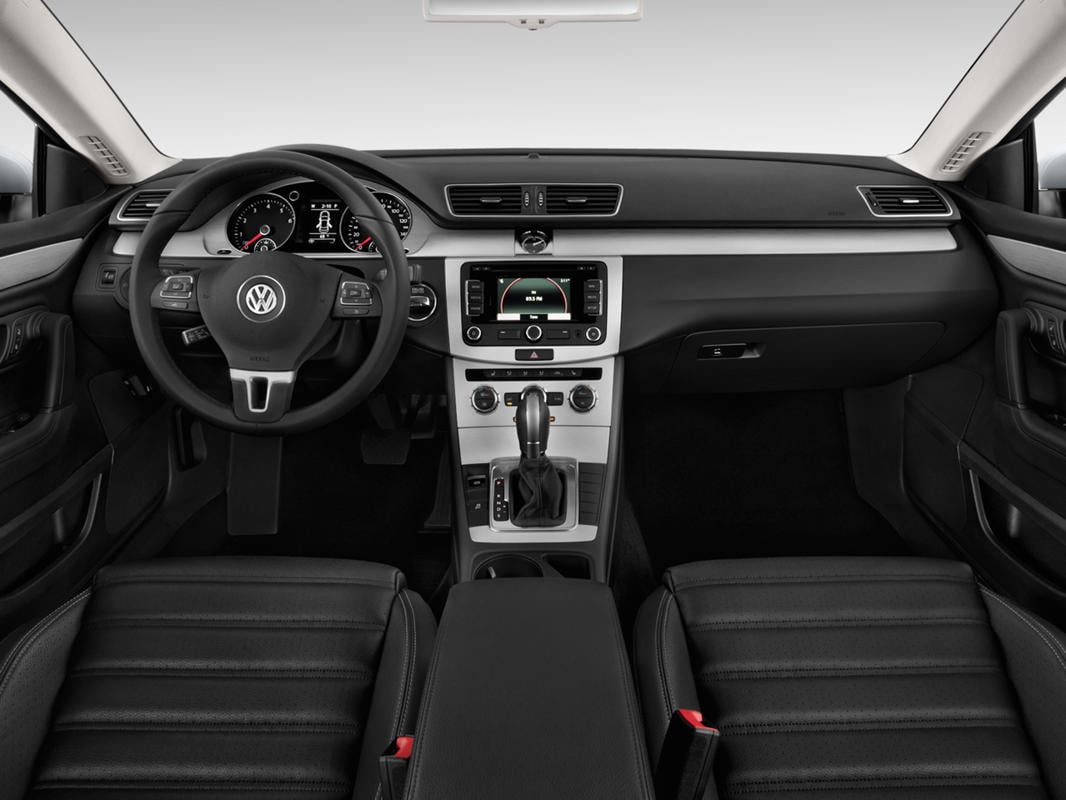

Executive wheels: The VW enigma
Jeff Rundles //August 26, 2014//

2014 VW CC R-LINE
Volkswagen is an enigma. It’s one of the most iconic brands in the US, having taken hold of the Baby Boomer Generation with the Beetle way back in the ‘60s, and it has two of the most venerable models on the market in the Jetta and the Passat. But in the last few years, sales have continually fallen, and the German carmaker’s market share in each of the main categories – e.g., compact cars for the Jetta and mid-sized car for the Passat – also are falling.
Part of the problem, as I see it, is its failure to stay on top of the rapidly evolving model update trend. The Jetta and Passat, sales leaders for the VW brand, are nice vehicles, but neither one has had a real good makeover in years. They have fallen behind the innovation curve.
I like them both very much, but I recently drove the 2014 Jetta SE and, frankly, was disappointed that it was pretty much the same as the Jetta I drove last year, the year before and the year before that. The Jetta, first introduced in 1979, is now in its 6th generation (since 2011), but in reality very little has changed since the 5th generation went on sale in 2005. That’s nine models years, which is too many not to have a major overhaul, particularly with sales falling.
So then I get this very sporty-looking 2014 CC R-Line and right from the start I have only one comment: “Why?” VW’s press machine likes to refer to the four-door car as a “coupe,” to foster the sporty notion I suppose, but it is a mid-sized sedan. The CC is very much like the Jetta, just a big larger, and very, very much like the Passat, just a little more sleek. What I discovered in my research was that when the CC was launched, in 2008, it was the Passat CC, a sporty trim of the Passat. So here in one company you have three sedans that, essentially, would appeal to the same buyer. Why?
Then you look at price. The base model Jetta carries a base price of $16,895. The base Passat has a base price of $21,120. The lowest-level CC carries a base price of $32,495. Why? And perhaps more importantly, What?
There is absolutely nothing about the CC that would justify a $12,000 price difference. Nothing. For instance, my test-drive model had the 200 hp, 2.0-liter in-line 4-cylinder engine with a turbocharger that wasn’t particularly fast or powerful; indeed, I thought it was sluggish and unresponsive. And it had a base price of $33,025. You can get a V6 Passat, with 280 hp, for $35,660. Why? I’d rather have the Passat.
In other car lines, when you go for the more expensive model, it has nicer stuff – it feels more expensive, quieter, more luxurious. The CC feels like a Passat. Don’t get me wrong – the CC is a nice car, like all VWs, but is it special? Special enough to justify the price jump? No.
As I mentioned earlier, the CC is really just a sleeker, sportier, less boxy Passat, which might appeal to some people. It is rather handsome. But with the sleekness you also get, or rather lack, headroom. I am a very average-sized man, under 6 feet, and I really can’t imagine my taller brethren (or my taller women friends) finding this CC comfortable. Even for me it felt a little cramped, and my back-seat passengers felt confined, too. Also, the back doors are kind of oddly shaped and need a wide berth to open, which is a challenge in what passes for adequate parking spaces these days.
 I will say I really liked one thing about this CC very much: the manual transmission. I don’t get many stick shift cars anymore, so that was surprising and some fun. And I have to say: this was the easiest-to-shift manual I have ever driven. It is extremely smooth, and the clutch has great feel and touch for the smoothest shift on the market. If you had to teach someone to drive a stick, this would be the system you would choose.
I will say I really liked one thing about this CC very much: the manual transmission. I don’t get many stick shift cars anymore, so that was surprising and some fun. And I have to say: this was the easiest-to-shift manual I have ever driven. It is extremely smooth, and the clutch has great feel and touch for the smoothest shift on the market. If you had to teach someone to drive a stick, this would be the system you would choose.
Here are some other CC features:
- Very small LCD screen which makes it difficult to see the radio controls.
- Very difficult to pre-select radio (including satellite) channels, and to switch between the various bands.
- Climate is with standard knobs below the LCD screen, and these are very easy to use and to control.
- Nice size trunk, very deep, but not quite deep enough for golf bags; had to put golf bags in diagonally, which limited the capacity.
- “Leatherette” seating surfaces, which isn’t really leather.
And one of the weirdest things I have seen in a while. Many cars these days have push-button start, where you just keep the key in your pocket. The doors unlock when you walk up (keyless entry). On this CC, you had to unlock the door with the key fob, and then you had to insert the key (not a key really, but a square) into the keyhole in the dash and then use it as a push button start. It is very cumbersome. I thought I would get used to it and over time just forget that I didn’t like this feature, but even after a week I found it troublesome.
As far as I could ascertain, R-Line, which is a registered trademark apparently, is simply VW’s name for sportiness. It’s a trim on the Tiguan SUV, the Beetle Convertible, and this CC, but it doesn’t stand for anything. I don’t see the point; just call the trim “Sport,” although they have that as another trim already. R-Line sounds like a drafting term, so perhaps they should go back to the drawing board.
There are four trims in the CC line – three with the 200 hp I4 engine that run from $32,500 to $37,400, and one with the V6 engine with 280 ho and VW 4Motion AWD that has a base price of $42,900
My R-line CC test-drive model had a base price of $33,025, and had no options. So, after adding the destination charge, the bottom line here was $33,890. Yeah, there’s Bluetooth and some nice standards, but still I ask Why? For a lot less money I would get one of the Jettas or Passats and feel as though I had a great car.
RATING: 2 WHEELS (OUT OF FOUR)

























